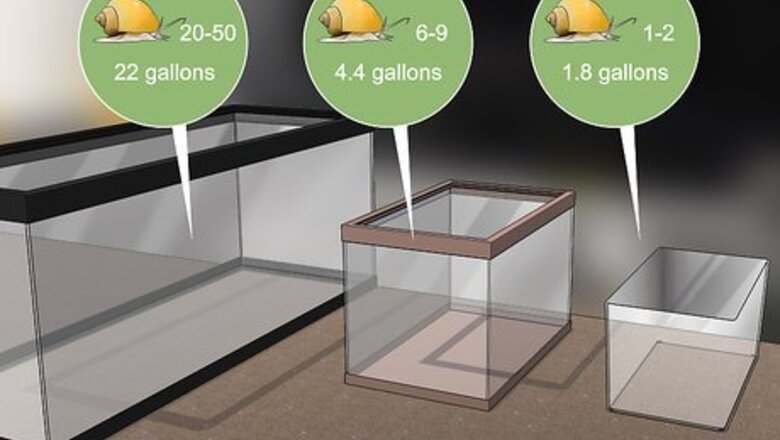
views
Setting Up the Tank
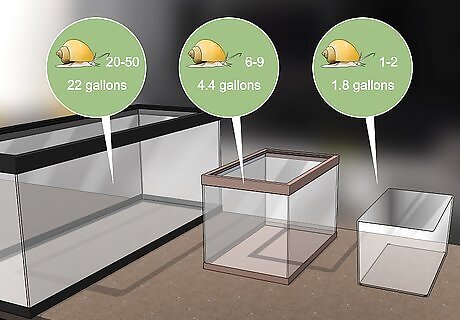
Choose a tank. Select a sturdy tank with a cover for your snails (as they are known to escape). Keep in mind how many snails you will be keeping (and whether or not you will be breeding your snails). This will help you determine what size tank you need. List below is for mystery snails by themself. Not with other fish. If you are planning on adding a mystery snail(s) with other fish, make sure you research the minimum size tank they can be in. For example, if you want a betta fish and a mystery snail together, you need minimum 5 gallons. Here are some guidelines: 1-2 snails require a minimum tank size of 3 gallons 3-5 snails require a minimum tank size of 10 gallons 6-9 snails require a minimum tank size of 15 gallons 10-19 snails require a minimum tank size of 20 gallons 20-50 snails require a minimum tank size of 40 gallons If you plan on breeding, consider buying a tank of 150L (40 Gallons) or more.

Fill your tank with water. Begin filling your tank with clean, fresh water. You'll want the water be approximately 24-30 degrees Celsius (75-86 Fahrenheit). The quality of your water will determine what additive you might need (such as bio-starters, beneficial bacteria, chlorine/heavy metal removers, water conditioner). Alternatively, you can purchase bottled de chlorinated water from many pet stores. If you don't know the quality of your water at home, you can use an ammonia/nitrate kit and/or liquid pH kit to determine levels. The ideal pH level for snails is 7.0 to 7.5. When the tank is half full add your substrate, decorations, and plants.
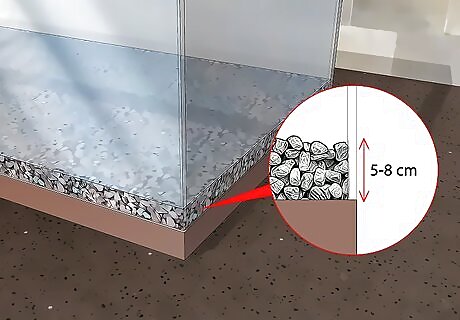
Choose a substrate. Snails generally prefer pebbles and gravel, rather than sand. Select a gravel substrate that is nice and smooth, with no sharp edges. Cover the bottom of your tank with this material, no more 5-8 cm (1.9-3.14 inches) thick. Stay clear of painted stones. Often these are coated in harmful paints that will start to flake after only a few months. Avoid choosing red or orange natural stones, as they may contain copper, which is toxic to snails. Always rinse new gravel/pebbles before adding them to the tank.
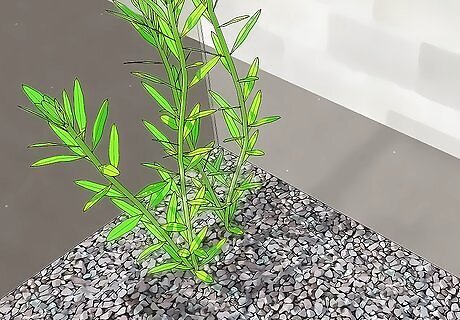
Add decorations and plants. Select some aquarium decorations for your snails' tank, as well as some aquatic plants. Plants oxygenate the water and make use of snail waste, while decorations give your snails places to hide. Use only decorations that are intended for aquarium use. Always rinse your new decorations in water before adding them to the aquarium. Keep in mind that your snails like to hide. Make sure they can't get stuck inside decorations. There is nothing wrong with your snails eating your aquatic plants. It is natural and it makes them happy.
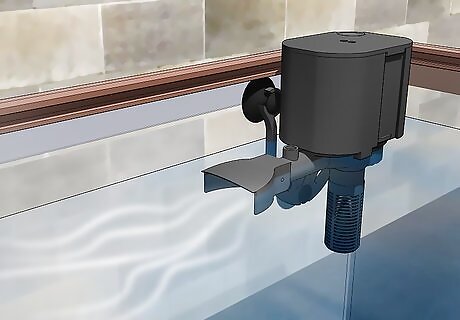
Turn on your filter. You will need to select and purchase a filter for your tank. After the water is in the tank, affix the filter you have chosen and turn it on. Various types of filters will have different directions. Simply follow the instructions included with your fish tank filter. Some options for filters include: Internal filters. HOB filter. Canister filters. Sponge filter Under-gravel filters (which also requires an air pump and air stones). If you have an internal or HOB filter, make sure to add filter fiber, bio media and filter sponge along with the carbon cartridge or you can have the filter fiber, bio media, filter sponge without the carbon. Carbon is only really needed if you are wanting to remove medicine from the water. Never replace the sponge, fiber, and bio media. If it’s getting really gross, gently wash it in old tank water that is dechlorinated. Make sure the sponge, bio media, and fiber never dry out. Your filter and heater should be running 24/7.
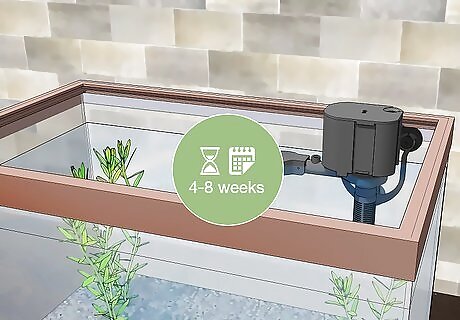
Wait 4-8 weeks. Once your tank is set up and your filter is running, you must wait and let the filter cycle. It is important to let the tank cycle before you add a snail(s). Cycling can take anywhere from 4-8 weeks. Do some research on how to do a fish less Cycle. Not cycling your tank can and will cause your snails to get sick and possibly die. A cycled tank will show 0 ammonia, 0 nitrite, and between 5-20 nitrate. If for some reason you test ammonia that is higher than 0 and/or nitrate higher than 20, do a water change ASAP. Keep this in mind before purchasing snails.
Adding Snails to the Tank
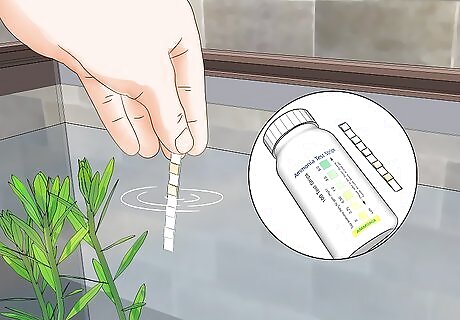
Check your water conditions. In order to keep your snails healthy, your tank must have a certain pH range and ammonia/nitrite level. Your tank must also stay between certain temperatures.Once your tank is cycled and you add snails, keep track of the water parameters each week. This is really important. To test pH, use a liquid pH test kit. (test strips are not as reliable.) Follow the instructions included with the kit to test the water. Snails like Alkaline water between 7-8. You can alter the pH of your tank by adding certain plants, or using a pH regulator. To test ammonia/nitrate levels use a ammonia/nitrate test kit. You want ammonia levels of 0 and nitrate levels of 5-20. You can bring down this level by doing big, frequent water changes. Replace 50% of the water in your tank twice a week. This is very important as mystery snails have a huge bioload and an ammonia spike can occur if too much poop or stays in the tank for too long. Using a siphon to clean your tank is highly recommended. Keep your water temperature between 24-30 degrees C (75-86 F). If you keep your home between these temperatures, your fish tank should be OK. Just be sure to monitor the temp.
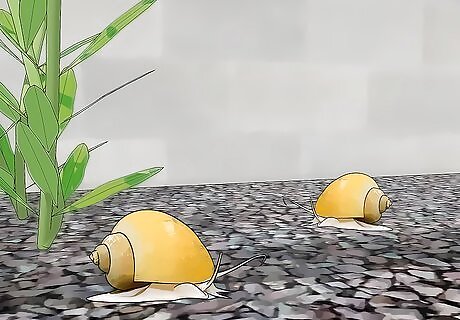
Put your snails in their new home. After you have allowed the water to fully cycle, and once you have verified a safe pH level, ammonia/nitrite level, nitrate level, and temperature, you can introduce your snails to their new home. Gently add them to the tank by picking them up out of the bag (from the pet store) and placing them right side up in the aquarium.

Don’t feed them right away. After you've introduced your snails to the tank, wait around eight hours before feeding them. This allows them a chance to get used to their new environment.
Providing Ongoing Care
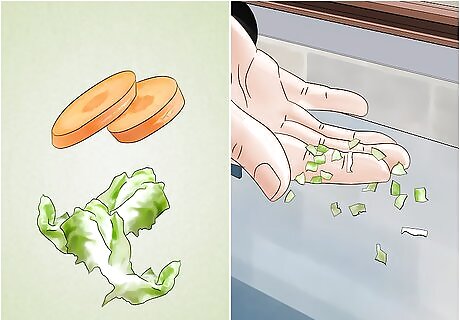
Provide home-cooked veggies. In order to feed your snails, prepare a mix of blanched vegetables. Blanching involves placing vegetables into boiling water and quickly removing it. Snails especially enjoy shelled peas, carrot, cucumber, broccoli, cauliflower, zucchini and iceberg lettuce (shredded or cut into tiny pieces). Allow vegetables to cool completely, then add them to your tank. Start by adding a small amount of blanched veggies each morning, and gauge how quickly your snails can finish them. Add a bit more or less until you can see that all food is being consumed within a few hours. Remove whatever isn't eaten from the tank within a few hours. The snails do not need any other source of food. Algae wafers are a good food too but shouldn’t be living on just that.

Add calcium to your water. Mystery snails need some additional calcium added their water. Add cuttlebone and/or shell grit to your snails' tank in order to increase the calcium content. Calcium chips are great too. Try to add a calcium source one per week. These items can purchased at most pet stores or online. Irregular shell growth or shell spots could be a sign that your snails need more calcium.
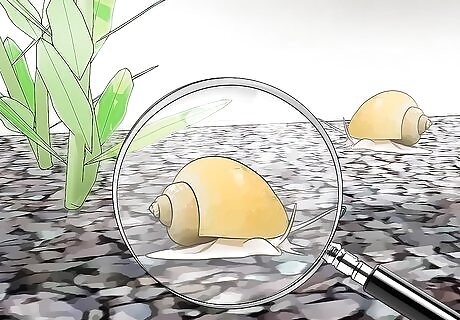
Keep an eye on the shells. Most health problems in snails present themselves in the health of the snail’s shell. If your snails’ shells are changing colors or growing in irregular patterns, you may want to consult a vet. You should also: Check your water quality Ensure that your snails are getting enough calcium Look for white spots on the snail’s skin
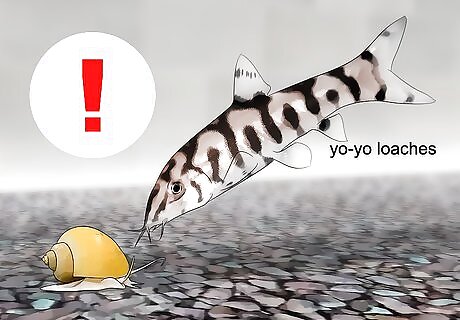
Avoid adding certain fish to the tank. Some fish can coexist peacefully with snails, while others will eat them. Never add clown loaches, yo-yo loaches, dwarf checkered loaches, skunk botia fish, or catfish to the tank with your snails. If you unsure about a certain fish, make sure to do some research. Pet stores aren’t always accurate on pet keeping information so you should make sure they are compatible than adding them because the pet store said so. Mystery snails are good tank cleaners and co-exist well with many aquatic species. But, they don’t eat as much algae as you think. They actually can make a worse mess than before adding them if you don’t clean the water. Make sure to siphon in the gravel, that is where most of the poop will be. Mystery snails have huge bioloads, please keep that in mind.


















Comments
0 comment